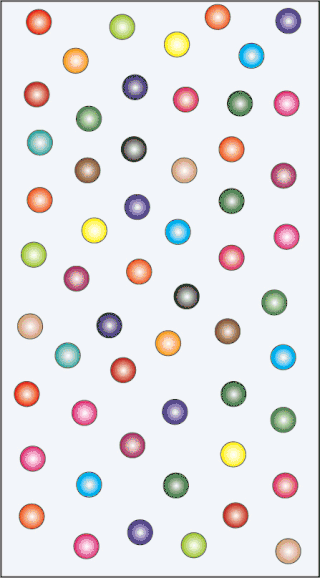Founder_takes_all
Founder takes all
The tendency of early colonists to dominate the gene pool
The Founder Takes All (FTA) hypothesis refers to the evolutionary advantages conferred to first-arriving lineages in an ecosystem.[1]
This article provides insufficient context for those unfamiliar with the subject. (March 2021) |

Density-dependent processes such as gene surfing, high-density blocking, and competitive exclusion can play crucial roles in the spatial structuring of biodiversity. These interrelated demographic processes can generate striking geographic contrasts in the distributions of genes and species.[2] Density-dependent processes refer to biogeographical processes in which population density (relative to resources) constrains the ability of new arriving lineages to establish [3][4]
It is proposed that well-studied evolutionary and ecological biogeographic patterns of postglacial recolonization, progressive island colonization, microbial sectoring, and even the "Out of Africa" pattern of human expansion are fundamentally similar. All these patterns are underpinned by the "founder takes all" density-dependent principle.[citation needed] For example, following a large-scale earthquake disturbance, two parallel recolonisation events and density-dependent blocking have been hypothesised to explain the occurrence of two distinct spatial sectors of population structure in Durvillaea antarctica on Turakirae Head in New Zealand.[5]
It is hypothesized that older historical constraints of density-independent processes are seen today, within the dramatic biogeographic shifts that occur in response to human-mediated extinction events. Due to these extinction events, surviving lineages can rapidly expand their ranges to replace extinct sister taxa.[2]
The FTA model is underpinned by demographic and ecological phenomena and processes such as the Allee effect, gene surfing,[6] high-density blocking,[7] and priority effects.[8] Early colonizing lineages can reach high densities and thus hinder the success of late-arriving colonizers. It has been suggested that this can strongly influence spatial biodiversity patterns.
Scientific evidence for FTA processes has emerged from a variety of evolutionary, biogeographic, and ecological research areas. Examples include: the sectoring patterns sometimes evident in microbial colonies;[9] phylogeographic sectoring of lineages, inferred to have rapidly expanded into new terrain-following deglaciation;[10][11] the island progression rule;[12] and sudden biological replacement (lineage turnover) following extirpation.[13]
One possible scientific consequence of FTA dynamics is that gene flow measures based on the genetics of contemporary high-density populations may underestimate actual rates of dispersal and invasion potential.[14]
- Waters JM, Fraser CI, Hewitt GM (2013). "Founder takes all: density-dependent processes structure biodiversity". Trends in Ecology & Evolution. 28 (2): 78–85. doi:10.1016/j.tree.2012.08.024. PMID 23000431.
- Waters, Jonathan; Fraser, Cerdiwen; Hewitt, Godfrey M. (September 21, 2012). "Founder takes in: density-dependent processes structure biodiversity". Trends in Ecology and Evolution. 28 (2). Cell: 78–85. doi:10.1016/j.tree.2012.08.024. PMID 23000431.
- Edwards, W.J. "Population Limiting Factors". Nature Education. Nature. Retrieved 27 March 2021.
- Vaux, Felix; Parvizi, Elahe; Duffy, Grant A.; Dutoit, Ludovic; Craw, Dave; Waters, Jonathan M.; Fraser, Ceridwen I. (2024). "First genomic snapshots of recolonising lineages following a devastating earthquake". Ecography: e07117. doi:10.1111/ecog.07117.
- Vaux, Felix; Parvizi, Elahe; Craw, Dave; Fraser, Ceridwen I.; Waters, Jonathan M. (2022). "Parallel recolonisations generate distinct genomic sectors in kelp following high magnitude earthquake disturbance?". Molecular Ecology. 31 (18): 4818–4831. doi:10.1111/mec.16535. PMC 9540901. PMID 35582778.
- Excoffier, L.; Ray, N. (2008). "Surfing during population expansions promotes genetic revolutions and structuration". Trends in Ecology & Evolution. 23 (7): 347–351. doi:10.1016/j.tree.2008.04.004. PMID 18502536.
- Ibrahim, K.M.; et al. (1996). "Spatial patterns of genetic variation generated by different forms of dispersal during range expansion". Heredity. 77 (3): 282–291. doi:10.1038/hdy.1996.142.
- De Meester L, Gomez A, Okamura B, Schwenk K (2002). "The Monopolization Hypothesis and the dispersal-gene flow paradox in aquatic organisms". Acta Oecologica-International Journal of Ecology. 23 (3): 121–135. doi:10.1016/S1146-609X(02)01145-1.
- Hallatschek, O.; et al. (2007). "Genetic drift at expanding frontiers promotes gene segregation". Proceedings of the National Academy of Sciences. 104 (50): 19926–19930. arXiv:0812.2345. doi:10.1073/pnas.0710150104. PMC 2148399. PMID 18056799.
- Fraser CI, Nikula R, Spencer HG, Waters JM (2009). "Kelp genes reveal effects of subantarctic sea ice during the Last Glacial Maximum". Proceedings of the National Academy of Sciences. 106 (9): 3249–3253. doi:10.1073/pnas.0810635106. PMC 2651250. PMID 19204277.
- Shaw; Gillespie (2016). "Comparative phytogeography of oceanic archipelagos: hotspots for inferences of evolutionary processes". Proceedings of the National Academy of Sciences. 113 (29): 7986–7993. doi:10.1073/pnas.1601078113. PMC 4961166. PMID 27432948.
- Collins CJ, Rawlence NJ, Prost S, et al. (2013). "Extinction and recolonization of coastal megafauna following human arrival in New Zealand". Proceedings of the Royal Society. 281 (1786): 20140097. doi:10.1098/rspb.2014.0097. PMC 4046402. PMID 24827440.
- Fraser CI, Banks SC, Waters JM (2015). "Priority effects can lead to underestimation of dispersal and invasion potential". Biological Invasions. 17: 1–8. doi:10.1007/s10530-014-0714-1. S2CID 3150294.